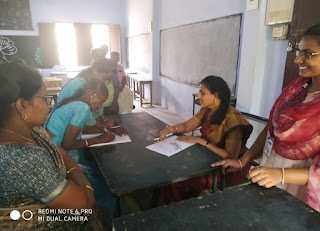Syllabus For Immunology
SEMESTER VI
IMMUNOLOGY
UNIT I History and Scope of Immunology. Immunity-Type of
Immunity - Innate & acquired, passive & active. Lymphoid organs
–primary & secondary ( Thymus, Bone marrow, Bursa of Fabricius, Spleen,
Tonsil, Lymph node, Peyer‟s patches) – Structure and Functions. (15L)
UNIT II
Immunoglobulin-Structure,
Function, Biological properties of Ig classes. Interaction of antigen and
antibody. Salient features of antigen-antibody reaction. Types of
antigen-antibody reaction – Agglutination, Precipitation, Opsonization,
Cytolysis. (15L)
UNIT III
Immune response-Lymphocyte as a unit of the immune system, stem cells - Structure and lineage, T cells, B cells
& Macrophages. Humoral immune response - primary & secondary responses
- B cell activation. Cell-Mediated immune response - Type of T cells &
functions. Tumour immunology. (15L)
UNIT-IV
Introduction: History &
Scope of microbiology. General structure of microbes (bacteria, virus).
Bacterial growth: Culture media & selective media; Continuous & batch
culture techniques, growth curve. (14L)
UNIT V
Food microbiology: Food poisoning; Food spoilage
& preservation. Industrial microbiology: production of Antibiotic
penicillin. Soil microbiology: Role of soil microbes in N2 fixation. Medical
microbiology: Diseases caused by bacteria in different systems of man as given
below: Dermal – Streptococcal inflammation: - Tuberculosis;
Gastro-intestinal-dysentery: Reproductive – Gonorrhea. Viral diseases
with reference to causative organisms, symptoms, impact on the host &
control measures, AIDS, Rabies, Chickenpox, Measles, Influenza & polio.

Comments
Post a Comment